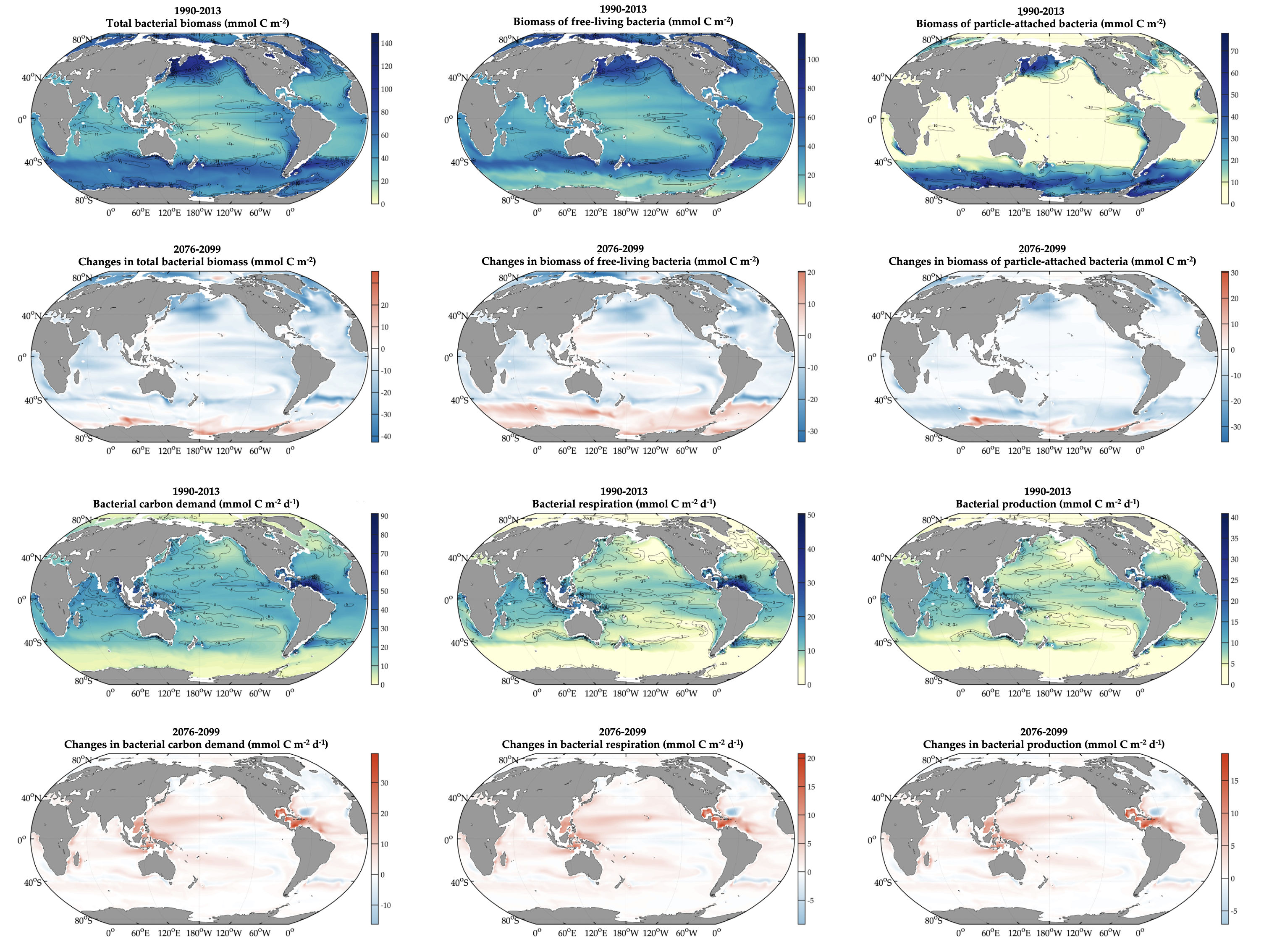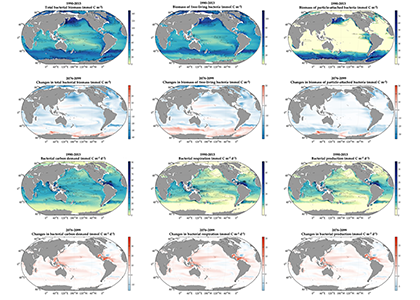The utilization, respiration, and remineralization of organic matter exported from the ocean surface to its depths are key processes in the ocean carbon cycle. Marine heterotrophic Bacteria play a critical role in these activities. However, most three-dimensional (3-D) coupled physical-biogeochemical models do not explicitly include Bacteria as a state variable. Instead, they rely on parameterization to account for the bacteria’s impact on particle flux attenuation.
A recent study examined how bacteria respond to climate change by employing a 3-D coupled ocean biogeochemical model that incorporates explicit bacterial dynamics. The model (CMCC-ESM2) is a part of the Coupled Model Intercomparison Project Phase 6. The authors first evaluated the reliability of century-scale forecasts (2015-2099) for bacterial stocks and rates in the upper 100 m layer against the compiled measurements from the contemporary period (1988-2011). Next the authors analyzed the predicted trends in bacterial stocks and rates under diverse climate scenarios and explored their association with regional differences in temperature and organic carbon stocks. Three crucial findings were revealed. There is a global-scale decrease in bacterial biomass of 5-10%, with a 3-5% increase in the Southern Ocean (Figure 1). In the Southern Ocean, the rise in semi-labile dissolved organic carbon (DOC) leads to an increase in DOC uptake rates of free-living bacteria; in the northern high and low latitudes, the increase in temperature drives the increase in their DOC uptake rates. Importantly, extreme warming could result in a global increase (up to 15%) and even higher in the Southern Ocean (21% increase) in bacterial respiration (Figure 1), potentially leading to a decline in the biological carbon pump.
This analysis is an unprecedented and early effort to understand the climate-induced changes in bacterial dynamics on a global scale in a systematic manner. This study takes us one step closer to comprehending how bacteria influence the functioning of the biological carbon pump and the distribution of organic carbon pools between surface and deep layers, especially their response to climate change.

Figure 1. Global projections of bacterial carbon stocks and rates during the baseline period (1990-2013) and their changes as anomalies under the most-severe climate change scenario (i.e., SSP5-8.5) relative to the baseline period (2076-2099). The stocks and rates during the baseline period (a, b, c, g, h, i) and their changes as anomalies under the most-severe climate change scenario (d, e, f, j, k, l). All variables are depth-integrated in the upper 100 m. Solid-line contours as standard deviation from averaging over 1990-2013. Anomalies are 2076-2099 average values relative to 1990-2013 average values. Global bacterial biomass has decreased by 5-10%, with a 3-5% increase in the Southern Ocean. However, extreme warming may increase bacterial respiration worldwide, thereby reducing the efficiency of the biological carbon pump. This study provides an early attempt to understand the response of bacteria to climate change and their impact on the distribution of organic carbon in the ocean.
Author
Heather Kim, Woods Hole Oceanographic Institution





